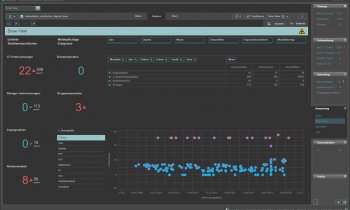Small wireless device to improve cancer treatment
USA - Engineers are developing a tiny wireless device - the size of a rice grain - to be implanted in tumours to indicate the precise radiation dose received and to locate the exact position of tumours during treatment.

The researchers, at Birck Nanotechnology Centre, Purdue University, West Lafayette, Ind., have tested a Prototype, the size of an average woman’s thumbnail, to prove the concept and expect to have the miniature version completed by the end of this summer, according to Babak Ziaie, an associate professor in the School of Electrical and Computer Engineering, and in Purdue’s Weldon School of Biomedical Engineering. ‘Currently, there is no way of knowing the exact dose of radiation received by a tumour. And, because most organs shift inside the body depending, for example, on whether a patient is sitting or lying down, the tumour also shifts,’ he explained. ‘This technology will allow doctors to pinpoint the exact position of the tumour to more effectively administer radiation treatments.’
The research paper, by Prof. Ziaie and PhD student Chulwoo Son, was presented in a paper earlier this year in proceedings of the 19th IEEE International Conference on Micro Electro Mechanical Systems, organized by the Institute of Electrical and Electronics Engineers.
The device, a ‘passive wireless transponder’, has no batteries, but will be activated by electrical coils near the body. Like a capsule, it will be placed inside a tumour with a needle.
Imaging systems already provide 3-D images of a tumour’s shifting position during therapy, but these methods are difficult to use during radiation therapy and sometimes require X-rays, possibly causing tissue damage tissue if used repeatedly, the professor pointed out. This wireless technology could precisely track a tumour using three or six coils placed around the patient to pinpoint the location of the electronic device.
Researchers tested the prototype with a radioactive material called cesium. The device contains a miniature version of dosimeters worn by people in occupations involving radioactivity.
The technology uses the same principle as electret microphones, products found in consumer electronics stores. These microphones contain a membrane that vibrates in response to sound waves. An air gap, between the membrane and a metal plate serves, as a capacitor, storing electricity. As the membrane vibrates, the size of the air gap changes slightly, increasing and decreasing the capacitance and altering the flow of electric current through the circuit, creating a signal that transmits the data stored in the dosimeter.
‘It’s basically like a very small tuning circuit in your radio,’ Prof. Ziaie explained. ‘This will be a radiation dosimeter plus a tracking device in the same capsule. It will be hermetically sealed, so it will not have to be removed from the body.’
The Purdue engineers are now working with researchers at the Indiana University School of Medicine to further develop the technology.
The research has been funded by the National Science Foundation. The Birck Nanotechnology Centre is part of Purdue’s Discovery Park, the university’s hub for interdisciplinary research.
Contact: bziaie@purdue.edu
01.05.2006











